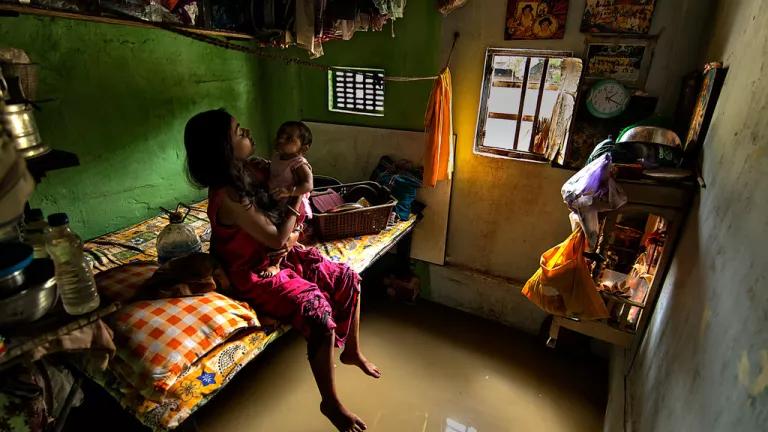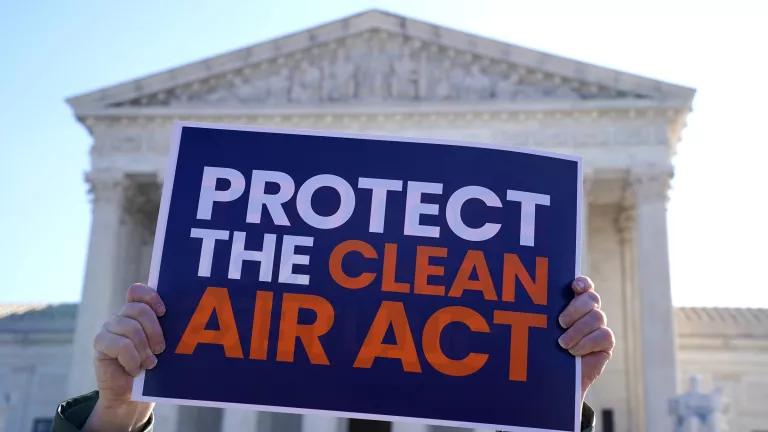Local Solutions Prepare South Asia for Searing Heat

Co-authored by Polash Mukerjee of the NRDC India Team
With news that the last decade was the hottest on record and an array of costly climate-fueled disasters hitting countries around the planet, the huge societal problems posed by climate crisis are clearer than they have ever been before. Central to these climate risks are major threats to public health: carbon pollution is making searing heatwaves hotter, dangerous wildfires deadlier, and extreme rainfall events stronger.
Amidst these growing and cascading public health threats driven by the climate crisis, communities are taking a stand to protect their health by taking concrete actions that improve preparedness. This week, a regional summit of heat experts in South Asia focuses attention on these local adaptation solutions in a part of the world that is already coping with oppressive, deadly, record-shattering heat:
India faces major risks from climate change-driven extreme heat. South Asia has documented some of the warmest temperatures ever recorded on the planet, and these more frequent and intense heat episodes aren’t just an inconvenience—they can be deadly. The number of high-temperature days in India has increased over the past fifty years, and especially since the 1990s, in highly-populated cities like Mumbai, Delhi, Chennai, and Jaipur. These cities experience even higher temperatures than their surroundings due to the urban heat island effect.
Motivated by these unprecedented and mounting climate risks to human health, the first-ever South Asia Heat Health Summit being held today in Pune, India aims to:
- Assess progress and ways to address extreme heat risks and identify emerging issues;
- Build awareness of the urgent needs, challenges and opportunities surrounding heat-health in the region;
- Identify concrete opportunities for new ways to reduce the impact of extreme heat in South Asia;
- Strengthen the Global Heat-Health Information Network in South Asia by building connections amongst key actors.
This summit is co-organized by the Global Heat Health Information Network (GHHIN), the Indian Institute of Tropical Meteorology, IRADe, IDRC, World Health Organization, World Meteorological Organization, and other groups. Experts from the Indian Institute of Public Health-Gandhinagar and NRDC contribute to GHHIN’s advisory board, and we have been working alongside local political leaders, academic researches, and civil society groups to strengthen resilience to extreme heat at the local level through Heat Action Plans (HAPs) for the past decade.
NRDC will highlight several policy-relevant topics in heat adaptation science, such as the inclusion of humidity in heat-health forecasts, and economic valuation of the harms imposed by heat-related health problems (and conversely, the cost savings from heat-health adaptation actions to reduce harm).
These efforts helped the city of Ahmedabad to launch South Asia’s first HAP in 2013, with a focus on building community awareness of heat-health risks, developing a heat early warning system that alerts residents of predicted extreme temperatures, and targeted interventions for vulnerable groups. A recent evaluation of the city’s HAP shows that, since implementation, it has enabled Ahmedabad to avoid more than 1,100 deaths during each year’s heat season.

Given its versatility and efficacy, the HAP model has spread rapidly across the country: HAPs now reach people in 23 of 29 states and over 100 cities and districts as a result of collaborative work by India’s National Disaster Management Authority (NDMA), the India Meteorological Department, and other local partners. NDMA regularly updates country-wide Heat Guidelines that identify short, medium and long term heat exposure reduction efforts, including resilient infrastructure planning.

India’s pioneering efforts to strengthen local resilience to the threats of extreme heat are now informing heat-health intervention projects across the region. By drawing on proven local solutions and science-based decision support tools, this week’s summit helps to build capacity, promote information sharing, and encourage evidence-based policy and actions to improve the management of extreme heat risks.
In the face of the climate crisis, solutions shaped by local expertise and community priorities are vital to achieve durable public health protections. In sharing their learnings, Indian cities on the leading edge of growing heat-health risks are demonstrating concrete ways to strengthen community resilience across South Asia.




